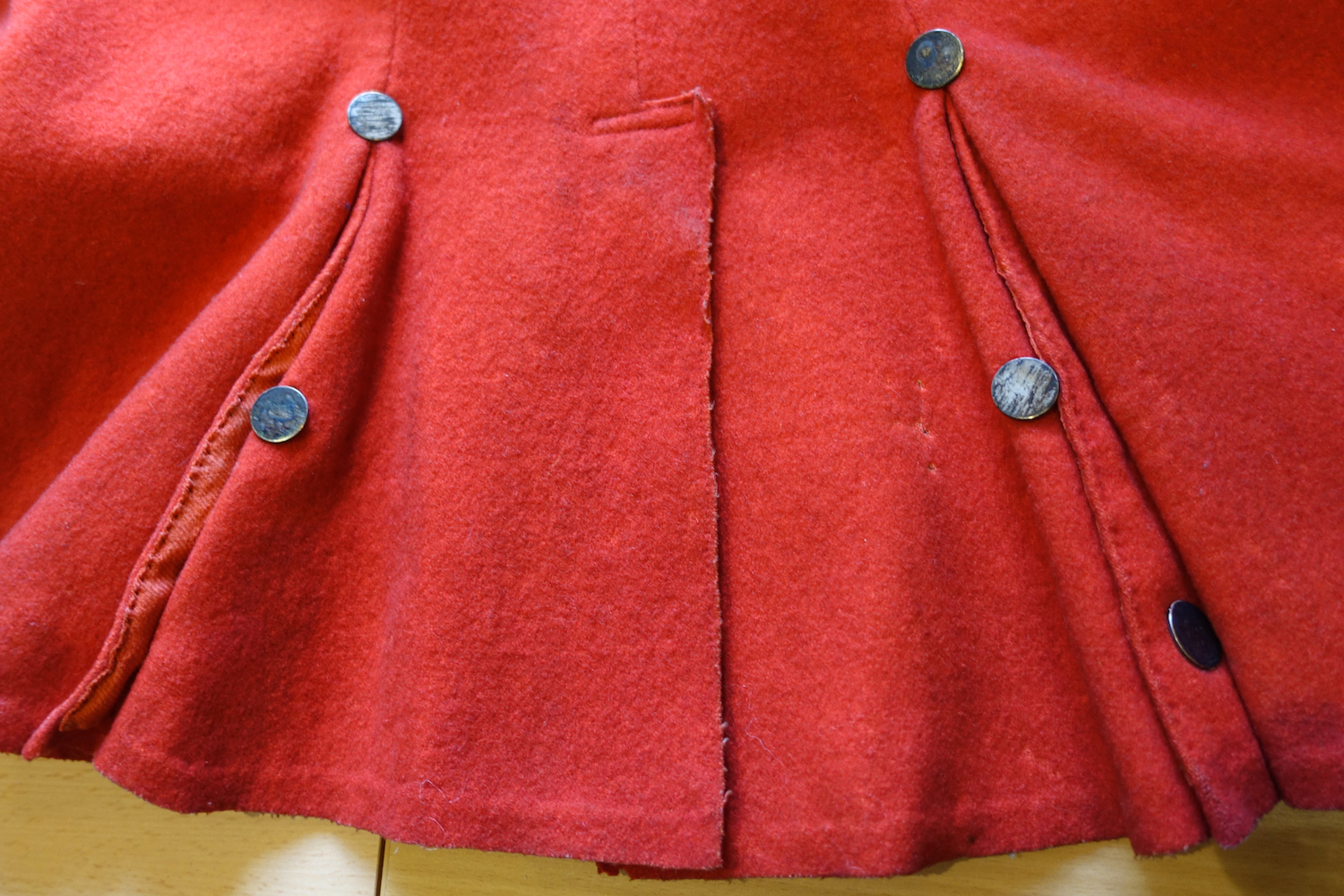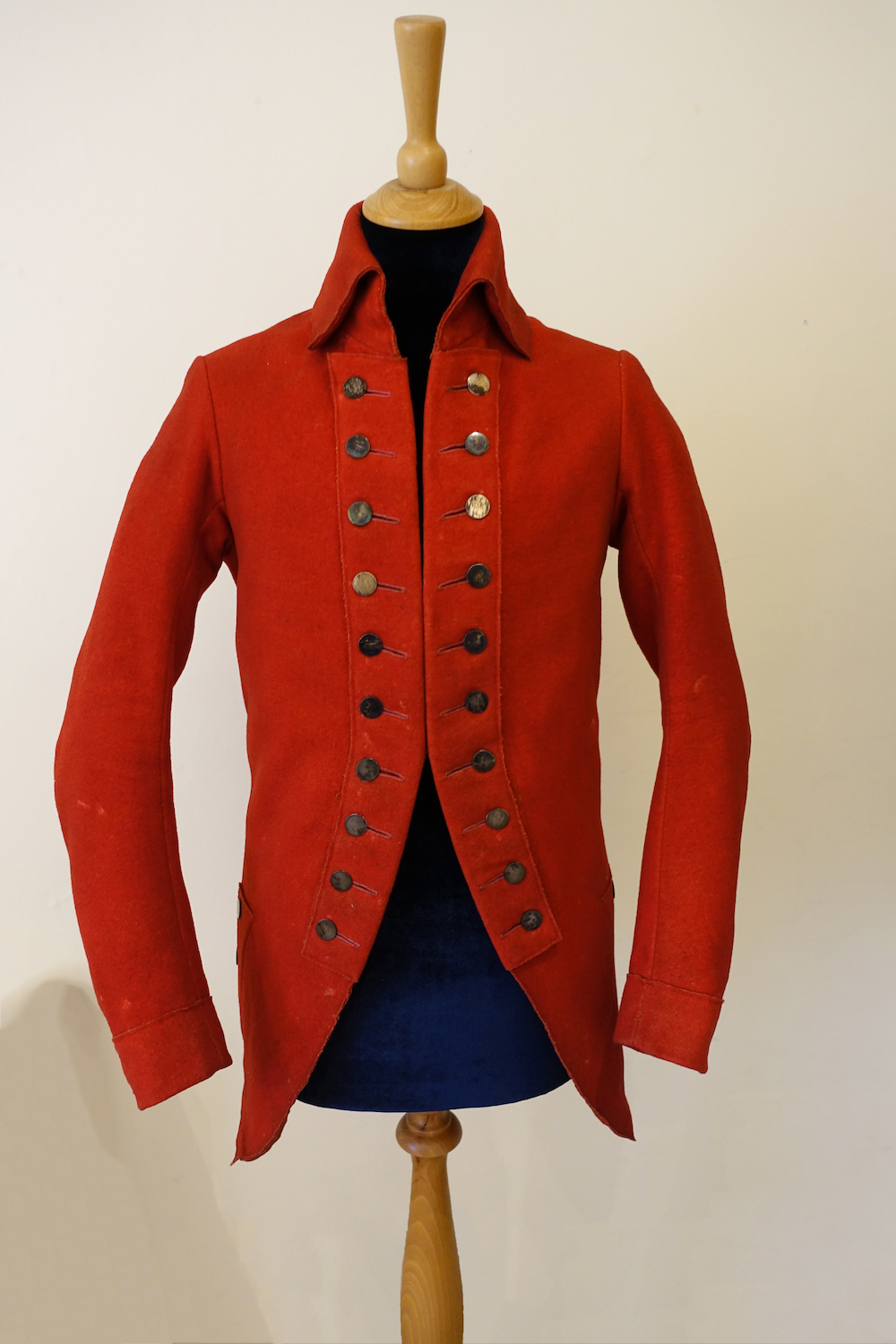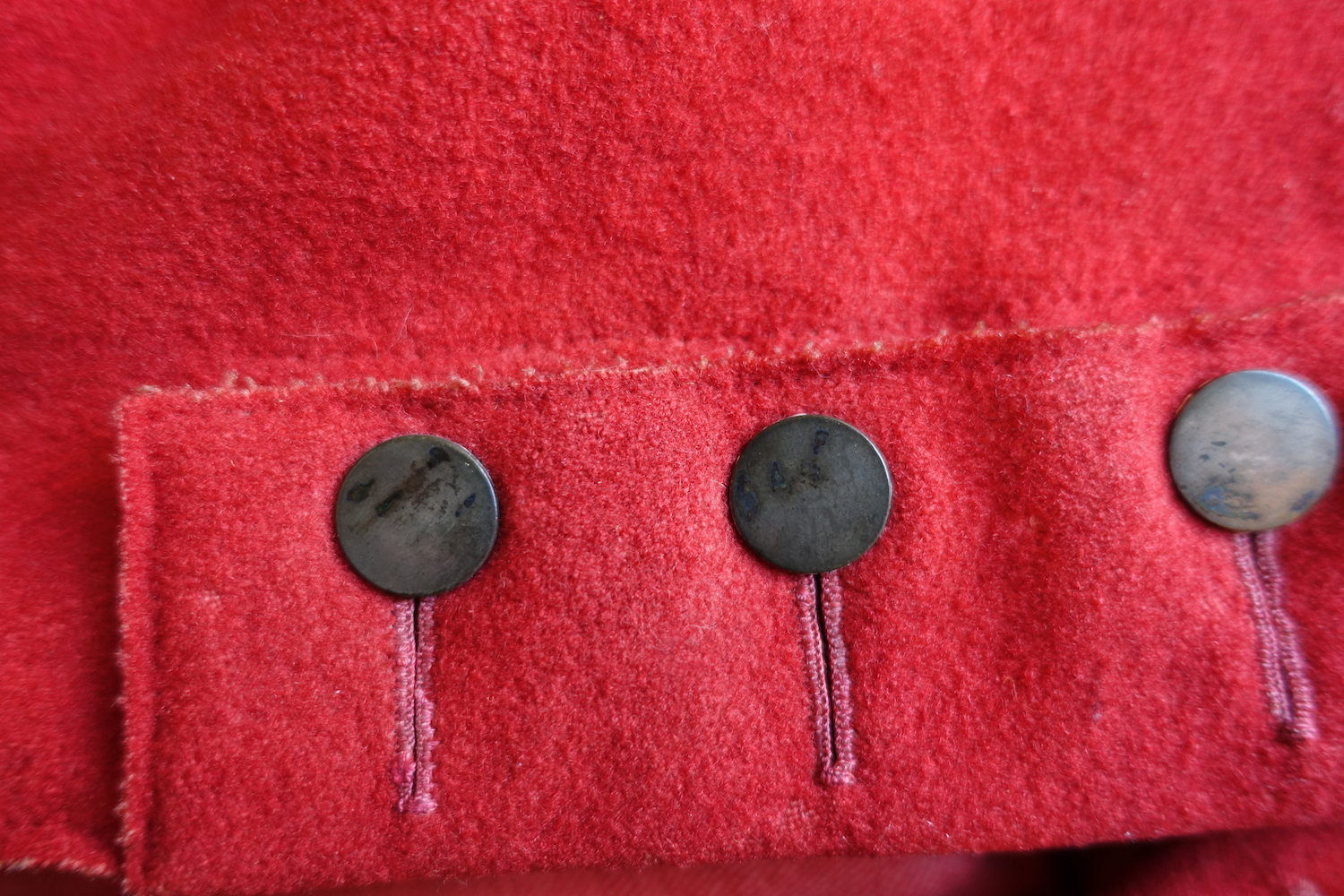Red riding coat
Object name: Red Riding Coat
Object number: CHWJA:JAH167:LOAN
Category: Objects
Description: A scarlet wool riding coat, single breasted, with a slight swallowtail shape at the front, lined with red worsted twill fabric. There are two working pockets, two skirt slits at the back, and ten metal buttons down the front, although it actually fastens with three hooks and eyes. It is said to date from around 1781, and this is backed up by the coat’s cut and style, which places it circa 1775-1785. The textiles and sewing are of middling, provincial quality.
Made: c. 1775-1785
Context: Family history says this coat belonged to Jane Austen’s brother Frank as a boy, and was made from Mrs. Austen’s wedding riding habit. This tale goes back to the first biography, James-Edward Austen-Leigh’s Memoir of Jane Austen, where he noted: ‘I have been told that Sir Francis Austen, when seven years old, bought … a pony… The same authority informs me that his first cloth suit was made from a scarlet habit, which, according to the fashions of the times, had been his mother’s usual morning dress.’
Austen-Leigh continued: ‘The bride’s ‘going-away’ dress seems to have been a scarlet riding-habit… We read of Mrs Austen being without a new gown for two years, and spending much of the time in a red riding-habit, which even then had not finished its usefulness, for it was cut up some years later into a suit for one of her boys.’
In the eighteenth century a riding habit was appropriate attire for a woman to wear at or after her wedding, which were always conducted in the morning. Habits, as they were known, comprised a jacket and skirt worn together, made of woollen fabric, and reflecting men’s tailoring and the cut of their suits. Women wore habits for informal visits and daywear, as well as to travel, in carriages and out riding.
If this object was made from Mrs. Austen’s habit, it could not have been cut down from her coat. The waist seam and smaller amount of fabric used in women’s coats means a female garment could be cut from a man’s, but not vice-versa. Therefore, if this boy’s riding coat had its origins in a habit, it must have been cut from a voluminous skirt.
Hilary Davidson, 2019
Other objects you might like:


